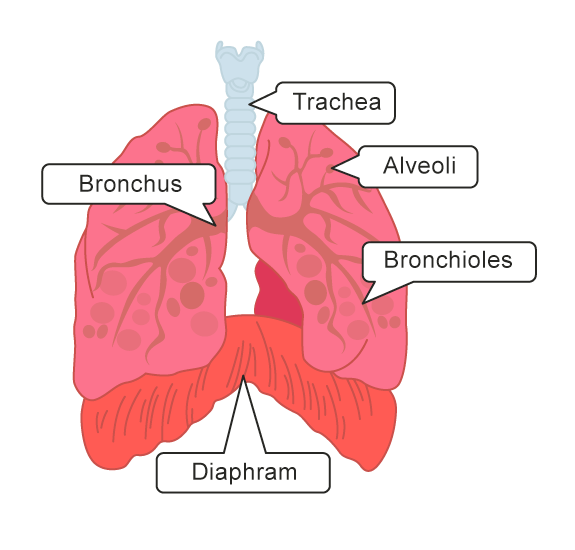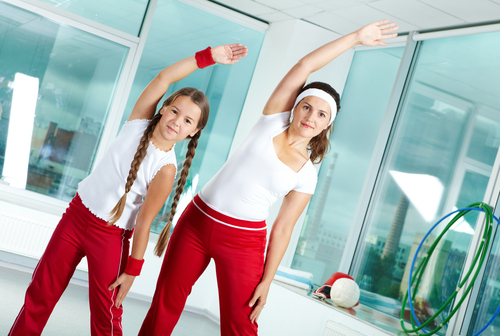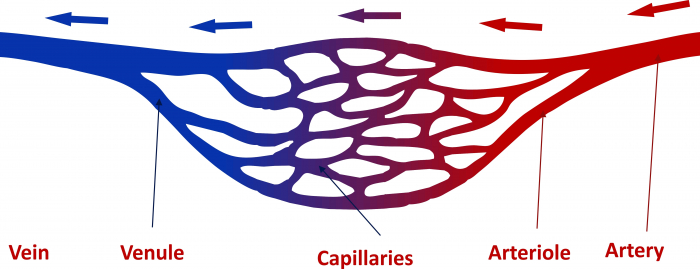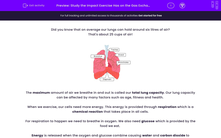Did you know that on average our lungs can hold around six litres of air?
That's about 25 cups of air!

The maximum amount of air we breathe in and out is called our total lung capacity. Our lung capacity can be affected by many factors such as age, fitness and health.
When we exercise, our cells need more energy. This energy is provided through respiration which is a chemical reaction that takes place in all cells.
For respiration to happen we need to breathe in oxygen. We also need glucose which is provided by the food we eat.
Energy is released when the oxygen and glucose combine causing water and carbon dioxide to be produced. The carbon dioxide is removed from our body when we exhale. Water is released in our sweat, urine and also as droplets in our breath when we talk and breathe.
We can summarise aerobic respiration using a word equation:
Glucose + Oxygen → Carbon dioxide + Water
Glucose and oxygen are the reactants in this reaction. They react with one another.
Carbon dioxide and water are the products in this reaction. They have been produced, or made in this reaction.
Take care not to confuse breathing in and out with respiration: breathing provides the oxygen needed for respiration and removes the carbon dioxide.
During exercise, more oxygen is inhaled which allows a higher rate of respiration. Over time, regular exercise can increase the volume of air taken into our lungs. This allows athletes to perform better as more oxygen can be transported around the body for respiring muscles.

Exercise also helps new capillaries to form in the lungs. Capillaries help to transport oxygen in the blood and nutrients to your cells. Having more capillaries helps oxygen to be transported quicker around the body.

Exercise also helps the diaphragm, the organ found under our lungs, to remain strong. The diaphragm contracts downwards when we inhale, increasing the space in our chest. This will have a knock-on effect on our lungs and the amount of air we can breathe in.
In this activity, we're going to look at the impact of exercise on the human gas exchange system.








